Matador Network's Blog, page 828
July 1, 2020
New Zealand Wild West town for sale

The Wild West has distinctly American connotations, but this detailed replica of a Wild West town is actually located in New Zealand. Mellonsfolly Ranch, built in 2006, is a replica of a 1860s Wyoming frontier town turned into a boutique hotel that can accommodate up to 22 guests, and it’s on sale for $7.5 million.

Photo: Mellonsfolly Ranch
According to the listing by Sotheby’s, “On this ranch, you won’t find herds of sheep or cattle. Taking advantage of the surrounding pristine native bush, Mellonsfolly Ranch operates a thriving Manuka honey business. Famed the world over, Manuka honey is one of New Zealand’s prized and most profitable exports. Indeed, the 450 hives on the property already generate a substantial income, with plans to expand to over 600 hives.”

Photo: Mellonsfolly Ranch
The 900-acre ranch is home to 10 period-themed buildings, including a boardwalk, a courthouse that doubles as a movie theater, a licensed saloon, stables, a sheriff’s office, a billiards lounge, one residential house, two rental houses, and luxury guest accommodations.

Photo: Mellonsfolly Ranch
This luxury property is highly unusual, but it’s sure to catch the eye of those with a passion for Western movies and deep pockets. For more information and photos of the ranch, check out the online Sotheby’s listing. 
More like thisCulture7 Wild West towns you can actually visit
The post This entire Wild West town replica in New Zealand is for sale appeared first on Matador Network.

All about ekiben

“I think food, culture, people, and landscape are all absolutely inseparable,” said the late Anthony Bourdain. In Japan, those three inseparable qualities can be found in ekiben, the iconic packed lunch that has served as a trusted travel companion for almost two centuries.
Ekiben is a popular quick meal that’s neatly packed in a beautiful box. While the food in an ekiben varies, generally each has a balanced combination of meat or fish, vegetables, and rice, and also comes with chopsticks. It’s fast food, but the notion of “fast food” is a lot different in Japan than what you might expect in a place like the United States.
The only aspect that puts ekiben in the same category as “fast food” is the fact that the meal caters to those who are short on time. Travelers pay and go, avoiding long restaurant lines. Eating ekiben while you make your way across the country on a bullet train is the ideal way to both see the country’s diverse terrain and taste iconic Japanese cuisine without leaving your seat. It might take a lifetime to explore all of Japan’s intricate culture, landscape, and history, but you can get started with its cuisine, one ekiben at a time.
The tradition is over 135 years old

Photo: Thanuch Sanpanyawai/Shutterstock
The term ekiben (駅弁) is a combination of eki (station) and bento (lunchbox). Its origin is interwoven with that of the shinkansen (bullet train), as the quick meal was created for the purpose of eating on the train. This union of travel and curated boxed meals began in 1885, 13 years after the first railroad opened in Japan, at Utsunomiya Station. Today, there are over 2,000 types of ekiben, and the bento box has become a sought-out feast for culinary enthusiasts across Japan.
Part of the reason for its popularity is that locals and travelers often choose to take the train over flying in Japan. The bullet train is a novel way to see the mountaintops of Hokkaido, Kyoto’s crystal lakes, and Osaka’s gorgeous foliage. Speed isn’t much of an issue as the train travels at a whopping 200 mph, allowing for complete relaxation onboard the cozy passenger car as stunning landscapes flash by. And as anyone who has eaten in a picturesque location before knows, the sights can be just as important as the tastes.
Eating ekiben on the bullet train has become a destination activity in itself. The iconic train has even garnered a large following. There are over 20 subcategories of railway fans, known as tetsu, Keiko Matsuura, from the Japan National Tourism Organization, tells Matador Network. There are those who like to board the trains (nori-tetsu) and those who like to photograph, video, and record its sounds (tori-tetsu). Fans who appreciate the mechanics and architecture are called sharyo-tetsu, while those who collect the tickets and other items are called shushu-tetsu.
And then, of course, there’s the ekiben-tetsu, “the foodies who board a train to eat a unique boxed meal,” Matsuura says.
Ekiben is a crash course in Japan’s regional flavors

Photo: osap/Shutterstock
There are common types of ekiben found all over Japan, but each region takes pride in its own variety, which is particular to that area.
While you will find gyutan (grilled beef tongue) in Sendai, you’ll discover something entirely different in Hokkaido, like kani-meshi (crab rice), which is different from the anago-meshi (conger eel served with rice) in Hiroshima. Some of the most sought-after ekiben include pittari tako-meshi — octopus rice with seasonal vegetables available at the Kobe and Osaka stations.
Ekiben isn’t just food, it’s an experience. The boxes are a way to taste expensive dishes on the cheap, such as the Matsusaka motaro bento, which has Matsusaka beef — regional beef valued as highly in Japan as Kobe beef is abroad. This ekiben is one of the most widely collected, too, because of its quirky design. The box is shaped like a bull’s head and you hear a soft melody as you open it.
It takes dedication to try all of the ekiben out there. To help narrow it down, we turned to Takafumi Mochizuki , a writer and ekiben expert, to name the top three to try.
“Yokohama Station sells a kiyouken shumai bento which is delicious,” Mochizuki says. “Then, there’s Niigata Station in Sanshin-ken where you need to taste ken shake no yakizuke bento, featuring grilled salmon. This is the best combination of grilled salmon and white rice from Japan’s famous rice-growing region! Finally, Miyajimaguchi Station offers ueno anago-meshi — softly grilled conger eel which is superb.”
If you like sushi, get yourself the kinka sababou ekiben. Prepared according to a recipe older than today’s widespread nigiri and maki, this mackerel roll is firmly pressed against white rice with the fish skin on the outside. There’s also the sanjyuu-hinmoku baransu bento, which is mostly plant-based and features assorted vegetables and rice, which can be found at multiple stations.
Each ekiben has a unique design

Photo: PixHound/Shutterstock
It’s not only the tasty meal that attracts food enthusiasts. The design of the wrapping paper and box make for a great collectible item.
An example of this is the daruma ekiben, which is designed after a traditional Japanese doll that’s used for good luck. After eating from this ekiben, which can be filled with foods like jellyfish, eggplant, cha mushrooms, and bamboo shoots, it can be repurposed as a coin bank due to the opening at the mouth.
There’s even a bullet-train-shaped box — the Shinkansen E7 Kei Bento — that pays homage to the very vehicle that transports it nationwide.
Then there are the wrappers.
Each ekiben comes wrapped in paper with an intricate design, and some feature symbols from their area of origin. Tomakomai’s ekiben comes with a design of an elderly Japanese fisherman catching a massive salmon. There’s also the gold-colored Hello Kitty ekiben, a “premium” rectangular ekiben that can double as a jewelry box.
The ekiben experience is a fun way to learn more about Japan’s regional history and food, and the designs and memories stay with you long after. 
More like thisFood + DrinkSee the best of Japanese cuisine in these official food-themed taxis
The post The bullet train is one of the best places to try regional Japanese cuisine appeared first on Matador Network.

9 sensory experiences in Santa Fe

When Georgia O’Keeffe first set eyes on the New Mexican landscape around Santa Fe, she wrote, “I’d never seen anything like it before, but it fitted to me exactly. It’s something that’s in the air — it’s different. The sky is different, the wind is different. I shouldn’t say too much about it because other people may be interested and I don’t want them interested.”
O’Keeffe was right about this place, and she was right about us: We’re interested. Now more than ever, we crave the fresh air, the fresh experiences, the wide-open spaces, the sky and wind, the soul reawakening that only a place like The City Different and its surroundings can offer. We need to reinvigorate our senses and start over. Here’s how to uncover your different in Santa Fe.
Note: All businesses, state and national parks, and monuments should be contacted prior to visiting to ensure accessibility and safety.
1. Hiking the wilds of Santa Fe National Forest
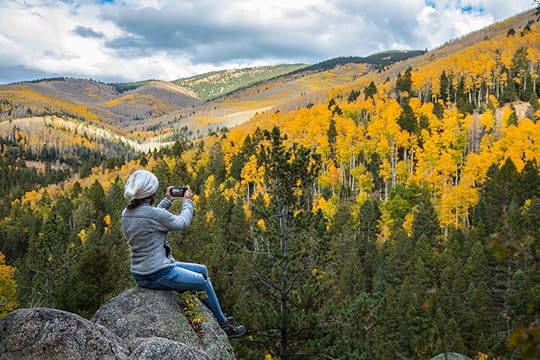
Photo: Light Benders Visuals/Shutterstock
At nearly 1.6 million acres, with hundreds of miles of trails, alpine lakes, mountain streams, aspen groves, hot springs, and elevations from five to 13,000 feet, Santa Fe National Forest has an incredibly diverse catalog of hikes. The trek up to the 12,600-foot Santa Fe Baldy is widely regarded as the top choice, a 14-mile journey you could easily turn into a two-day backpacking adventure. Either start ahead of the sun or stop at Puerto Nambé, a level meadow area about five miles in, to set up camp and take your time with the views.
Nearby Lake Katherine has its own incredible 360-degree alpine vista, while Jemez Falls and Rio En Medio Falls are accessible via easy and moderate hikes, respectively. Most agree that the golden hues of the quaking aspen make autumn the time to go, though this national forest is truly a four-season destination.
2. Soaking in the McCauley Hot Springs
Santa Fe National Forest is also home to a dormant volcano, and natural hot springs remain here to remind us that New Mexico’s heat-churning days aren’t over.
The 3.4-mile steadily uphill hike to the McCauley Hot Springs has great views the whole way, starting with the towering Battleship Rock — near the trailhead — and ending with small waterfalls and pools large enough for 15-20 people to have a soak under normal conditions (so if you and a few friends can score it all to yourself, you’ll have plenty of space).
3. Exploring tent rocks and fairytale hoodoos

Photo: Juancat/Shutterstock
Some six or seven million years ago, a thousand-foot-thick blanket of pumice, ash, and volcanic tuff covered this swath of north-central New Mexico. Over time, the rock layers have weathered and eroded, turning Kasha-Katuwe Tent Rocks National Monument into a fairytale land of tent-shaped cones, hoodoos, and slot canyons you can wander through, around, and between.
The 1.5-mile Canyon Trail is a one-way hike into a gorgeous slot canyon, and at the top of the steep 630-foot climb, you’ll summit a mesa and look out to three mountain ranges — the Sangre de Cristo, Jemez, and Sandia — and over the Rio Grande Valley.
Note: To avoid crowds, go early.
4. Rafting the Rio Grande
Around half an hour from Santa Fe, you’ll find both the roaring Rio Grande and the somewhat calmer Rio Chama, one of its tributaries. One day you’re navigating Class IV rapids in the Taos Box, a remote, cliff-lined chasm with 60-some rapids — the next, you’re lazily floating to the tune of rippling water.
The Rio Chama is a designated Wild and Scenic River, and a three-day float takes you along 30+ miles of water — some stretches with Class I–III rapids — much of the ride underneath high sandstone walls. Both Ansel Adams and Georgia O’Keeffe found inspiration in this area, and that should tell you all you need to know.
As for the Rio Grande, opt for a day trip through the Lower Gorge, tackle the Taos Box if you’ve got the confidence, or go for a 24-hour overnight trip in the scenic Orilla Verde section to catch twilight on the water. New Mexico River Adventures can hook you up with all of the above.
5. Mountain biking in the Sangre de Cristo Mountains

Photo: TOURISM Santa Fe
This southerly subrange of the Rocky Mountains extends well into New Mexico, peaks jutting into the sky just east of Santa Fe. The Sangre de Cristos are crisscrossed with mountain biking trails, most nearing a description not too shy of the word “difficult.” Here are a few to check out:
Dale Ball Outer Limits – Winding through Santa Fe County, city proper, and Santa Fe National Forest, the Dale Ball Trails are some of the most accessible. The 9.4-mile North and Central Loops, which link to form the Outer Limits, ascending and descending some 1,200 feet with a max grade of 21%, weed out the beginners.
Jagged Axe – If you’re a fan of high-speed corners, chutes, rock-rolls, and hike-a-bike sections, the 2.7-mile “Jagged Axe” — near Glorieta — will give you a run for your money.
Upper Rio en Medio – A quick 1.9 miles that’s nearly all descent, this trail takes you past waterfalls, creek crossings, and along tight switchbacks. You’ll follow the river the whole way.
If you’re not one to tackle six-foot drops and gnarly rock gardens, the city has plenty of beginner-friendly bike paths, like the Santa Fe Rail Trail from the Railyard District out to the New Mexican countryside.
6. Playing 18 holes under the wide-open sky
There’s one way to get some wilderness to yourself — and maybe three others — and that’s on the golf course. Four mountain ranges surround you at Marty Sanchez Links de Santa Fe, the high desert unfurling in the in-between just long enough for an 18-hole par-3 course.
South of Santa Fe, Cochiti Golf Club is also worth a mention. This Robert Trent Jr. course sits high on a plateau, winding between hills of juniper — which makes for some exciting terrain.
7. Feeling the spirit of the Puye Cliffs

Photo: Bas van den Heuvel/Shutterstock
“Between the Earth and the sky” is exactly where you’ll feel you are at Puye Cliffs. Pueblo Indians — the Tewa — lived in these caves and cliffs from 900 to 1500 AD, leaving behind a massive complex of nearly 1,000 rooms across two different levels. Tours allow you to climb the ladders and explore the kivas and other features of these impressive structures.
Most importantly: The tour guides are all descendants of those who originally inhabited these dwellings. Their stories will introduce you to a history and culture that most Americans know far too little about, taking the experience to another level altogether. Visit with respect and an open mind, ready to listen.
8. Going underground at the Gilman Tunnels
For one heck of a road trip out of Santa Fe, head east toward Jemez Springs and link up with Forest Service Road 376. This narrow two-lane route traces a line through the Rio Guadalupe box canyon, rock walls towering above it on both sides, at some points nearly blocking out the sun.
What definitely does block out the sun is the series of tunnels along this road, originally cut to facilitate a logging railway that operated in the 1920s and ’30s. The road turns to dirt just past the tunnels, but you can continue on to Highway 126 and eventually back to US-4 for a memorable loop drive.
9. Memorizing the foggy lines of New Mexico’s Milky Way

Photo: JB Manning/Shutterstock
New Mexico has one of the lowest population densities in the US, and you know what that means: views until the Milky Way, thousands of stars lighting up the sky from not too far out of town, and endless opportunities for busting out that telescope. Or someone else’s:
The El Rito Observatory holds monthly “dark night” star parties. Head north to the town of the same name and look for the golf-ball-shaped domes.
Astronomy Adventures runs star tours on Cerrillos Hills State Park’s Turquoise Trail. Peter, your guide, is a park ranger by day and astronomer by night.
Geoff at Night Sky Adventures leads personalized group tours in Bandelier National Monument and the surrounding area. He’s a National Park Service “Dark” Ranger and former astronomy teacher.
Night-sky views in the Jemez Mountains — near Valles Caldera, less than an hour from Santa Fe — are known for being remarkable.
Whatever road you choose, whether it’s a trail of stars or a mountain path, it’s time to reinvigorate your senses — and uncover your different in Santa Fe. 
The post 9 experiences to reinvigorate your senses in and around Santa Fe, NM appeared first on Matador Network.

June 30, 2020
LGBTQ Travel in Cape Town

Nicknamed South Africa’s Pink City by the LGBTQ community, and affectionately known as the Mother City to all South Africans, there is no place on Earth quite like Cape Town. From the exquisite natural beauty of its mountains, oceans, and Winelands to the buzzing nightlife and exciting culinary scene, there are many reasons why Cape Town should be on any traveler’s bucket list. For LGBTQ travelers, Cape Town is the undisputed queer capital of Africa, with an inclusive culture and community that grows stronger each year.
Safety is often a concern for visitors in Cape Town due to the country’s high crime rate. The sad reality is that crime does happen. Hate crimes and instances of homophobia still occur — as they do anywhere in the world — but this should not deter you from traveling to Cape Town. As a general rule of thumb, keep your belongings close and avoid walking alone at night. This is something that locals will recommend and practice themselves. Aside from this, South Africans are generally very friendly and will be sure to make you feel as welcome as possible.
LGBTQ history

Photo: Creative Photo Corner/Shutterstock
South Africa has a complicated and tragic history of discrimination influenced by colonialism and apartheid. Under the apartheid regime from 1948 to 1994, homosexuality was a crime punishable by up to seven years in prison. Several gay rights organizations were formed in the 1970s, but until the 1980s, the groups were divided racially. Many prominent white members of the gay community endorsed the ruling National Party.
Since the end of apartheid, the South African constitution has made a concerted effort to ensure equal rights for all. South Africa’s post-apartheid constitution was the first in the world to outlaw discrimination based on sexual orientation. Gay marriage has been legal in South Africa since 2006, making it the first, and to date the only, African country, and only the fifth country in the world, to do so.
South Africa’s very first pride parade was held in Johannesburg in 1990 and became the first event of its kind in Africa. Cape Town held its first pride parade in 1993 and (save for a few interruptions) has held it annually since. In 2010, Cape Town launched South Africa’s very own pride flag which combines the colors of the rainbow flag with the South African flag.
LGBTQ neighborhoods

Photo: Visit South Africa/Facebook
You’ll find LGBTQ and LGBTQ-friendly spots all over the city. However, De Waterkant is Cape Town’s quintessential “gayborhood.” Here you’ll find an enclave of hipster coffee shops, vibrant restaurants, fashionable boutiques, and many of the city’s most popular gay bars and restaurants.
De Waterkant is also Cape Town’s most colorful district in every sense of the word. Many of the historic Georgian and Cape Dutch-style buildings lining the street are brightly colored. For the ultimate rainbow fix and a taste of local Muslim culture, make your way up to the gorgeous Bo-Kaap (the higher end of the Waterkant). The former Cape Malay quarter is known for its picturesque houses painted every color of the LGBTQ flag.
Bars and nightlife
Café Manhattan
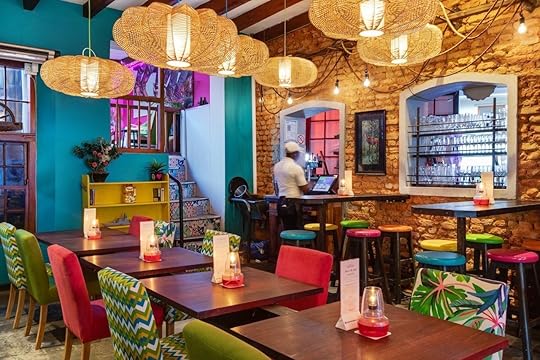
Photo: Cafe Manhattan
Café Manhattan is an institution. In fact, it’s not only the longest standing LGBTQ restaurant-bar but also the longest standing venue in all of De Waterkant village. Here you can enjoy a wide variety of tasty eats, fantastic happy hour deals, and cocktails well into the night. It’s a quirky Wild West-style spot that’s sure to make you feel like you’re part of the family.
Where: 74 Waterkant Street, De Waterkant
Crew Bar
One of Cape Town’s signature LGBTQ club-bars, Crew Bar always guarantees a wild time. If you want to dance the night away with sexy go-go dancers, half-naked bartenders, and enjoy theme nights, Crew is the place for you.
Where: 30 Napier Street, Waterkant
Pink Panther Night Club
Pink Panther is one of Cape Town’s most popular LGBTQ nightlife spots. At its core it’s a dance club, playing mostly pop music. For a little bit of luxury (and to avoid lines at the bar) you can get a VIP booth and table service. The bar staff is well known for its warm hospitality.
Where: 120 Strand St, De Waterkant
Beefcakes

Photo: Beefcakes
Fancy a burger and fries and a drag show on the side? Beefcakes is a well-known establishment thanks to its always-fun combination of seriously hunky waiters, delicious diner-style eats, and hilarious drag performers. While Beefcakes has become a bit overrun with bachelorette parties, it’s still worth popping by for a show or their weekly Bitchy Bingo.
Where: Sovereign Quay, 34 Somerset Road, Greenpoint
Zer021 Social Club
A club that’s loved by the local LGBTQ community, Zer021 Social Club is best known for its drag shows and live entertainment. It also boasts some of the most reasonable drink prices around. The crowd here tends to be very diverse — everyone is welcome. Keep a lookout their Facebook page for their next event.
Where: 46 Canterbury St, Zonnebloem
Berta’s
Owned by the same people who brought us Zer021, Berta’s is an all-inclusive restobar. It hosts regular, free-entry drag shows, quiz nights, and often has drink and meal specials. Expect awesome pub-grub and chilled vibes.
Where: 330 Albert road, Woodstock
Gate 69

Photo: Gate69
Gate 69 is a real treat for those who love a bit of theater. For a full drag or comedy show head on over to this immaculate cabaret theater. Booking is essential as the intimate space only allows for up to 90 people. Tickets include a designer mezze platter served on a double-tiered Lazy Susan, along with soup and bread service and purple Patron ice-cream for dessert.
Where: 87 Bree Street, Corner of Bree and Hout Street
Versatile
Versatile is a men-only bar that provides regular bar service from Sunday to Tuesday and hosts themed nights from Wednesday to Saturday. Wednesday is underwear night — wear your best briefs, Thursday is naked night — don’t wear anything, and Saturday is fetish night — wear whatever you want.
Where: 18 Cobern Street, De Waterkant
Events
Cape Town Pride

Photo: Cape Town Pride
Cape Town Pride usually occurs from the end of February to early March. February is Cape Town’s dry season, and while March marks the end of summer, it’s usually still bright and sunny around that time of year. It is also just off peak season, meaning flights and accommodation will be well-priced.
Cape Town Pride is unique in that it is one of the more diverse pride festivals around the world. As well as a parade, you can enjoy parties, competitions, art, poetry, karaoke, book readings, and even a fun run. You’ll see LGBTQ people of all races, ethnicities, and abilities. As well as a celebration of the LGBTQ community, it is also a celebration of Africa with much of the costuming paying homage to African cultures and heritage.
When: February — early March
Miss Gay Western Cape

Photo: Miss Gay
The Miss Gay Western Cape pageant has long been a platform hosted by transgender men for LGBTQ people. Prior to 1996, the pageant was held in secret, but now they’re loud and proud. Miss Gay Western Cape occurs annually, usually in early November. Each year’s winners will work to provide community service to those in the queer community, particularly those affected by HIV and AIDS. Miss Gay also educates, promotes, and celebrates drag culture in underprivileged communities through pageants, events, and educational workshops.
When: November
Mother City Queer Project (MCQP)
MCQP is an annual blowout in which LQBTQ guests will dress up to a certain theme and showcase their creations on the pink carpet. Again, what used to be a small underground gathering is now one of the largest parties in the city. Usually taking place around the festive season in December, MCQP hosts a variety of local and international music talents to ensure a memorable night for all.
When: December
Saunas and beaches

Photo: South Africa Tourism
Cape Town is home to some of the most pristine and picturesque beaches in the world. It’s also home to both the Atlantic and Indian Ocean, and you can watch the oceans meet at the stunning Cape Point. The beaches that form part of the Atlantic seaboard are much colder than those along the Indian Ocean, meaning that they are simply too cold to swim in and are therefore more popular with local kitesurfers than beachgoers.
Clifton Third Beach
Certainly one of the busiest beaches in Cape Town, Clifton Third Beach is a popular hangout for local gay men. It’s also located in one of the most affluent suburbs. As you bathe in the African sun you can enjoy the views of some of the finest mansions in the city as well as pretty turquoise waters.
Sandy Bay
Sandy Bay is Cape Town’s resident nude beach and is often frequented by the LGBTQ community. Of course, you don’t have to go nude here, but you’ll most likely be the odd one out if you don’t. While it’s not the easiest beach to get to — you can either clamber over rocks or take a 20-minute walk from Hout Bay — if you do make the trek, you’ll be rewarded with gorgeous white sand and rocky shorelines. The waves here tend to be pretty fierce making it popular for surfing.
Camps Bay

Photo: Sunshine Seeds
Camps Bay is an upmarket area with a palm-tree-lined promenade that stretches all along the sandy beachfront. The promenade is lined with trendy restaurants, bars, and cafés frequented by the local LGBTQ crowd. With its backdrop of Lion’s Head and 12 Apostles mountains, its beauty is hard to resist. Fun fact, Camps Bay was the setting of the virtual town of San Junipero in Black Mirror — which we all know was one of the greatest queer love stories of our time.
The Hot House Steam and Leisure
Not much of a beach person? Head over to Hot House — a stylish and upmarket, men-only steam bath and adult store. It’s pure luxury with a fireplace, lounges, a bar, and a sundeck overlooking the city. Aside from a massive steam room, two spa baths, three video lounges, maze, and showers, there are private rooms and paid cabins with double beds, TVs, and air conditioners. It’s said to be one of the finest gay saunas in the world.
Where: 18 Jarvis St, Green Point
Accomodation
Kensington Place

Photo: Kensington Place
Kensington Place is a gay-owned luxury boutique hotel nestled on the slopes of Table Mountain. The hotel has just nine rooms, and each is decorated differently, but all offer king-size beds, underfloor heating, and balconies with garden, sea, and city views. They’re often praised for impeccable service.
Where: 38 Kensington Cres, Higgovale Gardens
Pink Rose Guesthouse and Spa
This gay-men-only bed and breakfast is located just outside of Cape Town and is a stylish and quiet home away from home. Enjoy sweeping views of the mountains and sea along with a pool, sauna, and jacuzzi. A decadent breakfast is included daily, and massages are also on offer. Pink Rose offers small group tours and is in close proximity to the exquisite Cape Winelands, making it an ideal city break.
Where: 15 Lantana Street, Helderview, Somerset West
The Glen Boutique Hotel and Spa

Photo: Glen Boutique Hotel
Open to everyone but very LGBTQ-friendly, the Glen Boutique Hotel and Spa is conveniently situated in Sea Point (near Clifton and Sandy Bay) with ocean and mountain views. The Glen offers a wide range of luxury rooms, styled to your taste, as well as an outdoor pool, spa, restaurant, and sauna. They also offer yoga classes, access to a gym, and tours can be arranged.
Where: 3 The Glen, Sea Point 
More like thisLGBTQ TravelThe ultimate LGBTQ guide to Los Angeles
The post The ultimate LGBTQ guide to Cape Town, South Africa appeared first on Matador Network.

NASA’s timelapse of the sun

Over the past decade, from June 1, 2010, to June 2, 2020, NASA’s Solar Dynamics Observatory has been watching the sun nonstop, capturing 425 million high-resolution images of the star. From those images, the National Aeronautics and Space Administration selected one picture taken every hour by SDO and compiled them into a 61-minute video, with each second representing approximately one day.
The timelapse showcases the sun’s outer atmospheric layer, called the corona. It gives you a rare, close-up view of solar activity like solar flares (see minute 6:20, i.e. June 7, 2011) and the transit of Venus across the face of the star (see minute 12:24 , i.e. June 5, 2012), an event that won’t happen again before 2117. You may also be able to see the sun resembling a Jack o’ lantern on minute 26:39, i.e. Oct. 8, 2014. Below is a photo of the event.

Photo: NASA
If you notice dark frames in the video, they’re likely caused by Earth or the moon passing between the satellite and the sun. There’s also another noticeable, prolonged dark spot in the video, which was caused by a week-long issue with the camera in 2016. 
More like thisNewsNASA releases 50-year timelapse of the earth and moon for Earth Day
The post NASA releases epic 10-year timelapse of the sun appeared first on Matador Network.

Traditional fermented foods
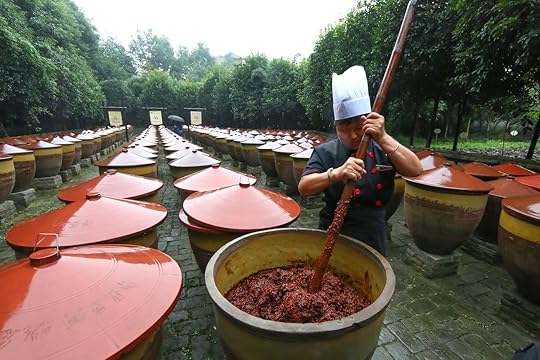
Fermentation is an ancient culinary technique used around the world. It was originally developed to preserve food during harsh winters and food shortages before the time of refrigeration. Vikings traversing the oceans on long voyages needed a supply of edible fish so they didn’t starve while at sea, so they invented lutefisk. Too dangerous to fish on the ice in the winter? The Inuit people have an answer: Stuff a seal carcass with birds and bury it underground until it ferments. And if you’re a Chinese laborer worried your cabbage is going to go bad, you might ferment it in rice wine, inventing what we now know as sauerkraut.
A way to preserve food is just one side of the fermentation story, though. Flavor is the other. Fermentation has been applied to fish and beans to create pungent, umami-rich pastes that add complexity to soups and stews, as well as condiments for vegetables, tofu, and rice. The fermentation process adds a depth of flavor to ingredients like ogiri and miso, both foundational to numerous cuisines in Asia and Africa.
Fermented foods might be pungent, tangy, sour, and salty, but many of them also recall the history of the cultures from which each one originates. Whether illuminating the warrior mindset of the Vikings or the diet of the people who built the Great Wall of China, fermented foods are an essential part of culinary history. Here are the 10 fermented foods you need to know about.
1. Doubanjiang
This spicy bean paste is one of the central ingredients in the Sichuan cuisine of southwestern China. Doubanjiang is made with broad beans, rather than soybeans, and is used to season dishes like mapo tofu, a notoriously spicy dish that uses Sichuan peppercorns as another main ingredient. Doubanjiang is pungent and earthy in flavor, thanks to the long fermentation process behind it, while the heat from the spice balances out some of its formidable saltiness. That hit of umami from doubanjiang gives Sichuan Chinese cuisine its signature depth and complexity.
2. Lutefisk
Lutefisk was likely first consumed by Vikings in what is now Norway. Today, it’s rarely consumed in the country, but it’s a delicacy among Scandinavian-Americans in Minnesota and Wisconsin. Lutefisk is notorious for its pungent aroma. It’s made by taking codfish that has been dried to the point of resembling cardboard more than fish and rehydrating it with lye — a chemical typically used to unclog your bathtub drain.
By the time it’s been rinsed off and shipped away to be eaten by the proud Scandinavian peoples of North America, the texture becomes “slippery and a little squishy,” according to Smithsonian magazine. Today, lutefisk is typically eaten at church-hosted dinners on Christmas.
There are several legends surrounding the provenance of lutefisk, including that Irish fishermen tried to poison Viking hoards by adding lye to their fish stocks (not true) or that after the wooden racks where the Vikings dried their fish burned down, they rediscovered rehydrated fish in puddles of rainwater covered in ash. The first recorded mention of lutefisk didn’t pop up until 1555 when a writer recommended that it be served loaded with butter on top.
3. Ogiri
Food blogger Flo Chinyere calls ogiri “the most pungent Nigerian food ingredient ever.” Particularly foundational to the cuisine of the Igbo people, ogiri is traditionally made from castor seeds, which are poisonous unless fermented. However, ogiri can also be made from egusi seeds, which are boiled until they become soft, wrapped in banana leaves, and then left to ferment for at least five days. Once fermentation is complete, the seeds are mashed into a charcoal gray paste. The resulting paste is then used to flavor soups like ora soup (made with Scotch bonnet peppers and goat) and onugbu, or bitterleaf, soup.
4. Sauerkraut

Photo: ilolab/Shutterstock
This sour, fermented cabbage might be most familiar as a topping for hotdogs, but it’s got a long history — and that history doesn’t start in Germany. Sauerkraut originated in China 2,000 years ago, when workers building the Great Wall of China sustained themselves mostly on cabbage and rice. According to the New York Times, the workers added rice wine to the cabbage in winter, which fermented and preserved it.
Though we now think of sauerkraut as a thoroughly German snack, it didn’t land on their shores until the 1600s. It was likely brought to Europe by the Tartars, a group of people of primarily Russian and Turkish ancestry who were united under the empire of Ghenghis Khan.
Today, the pungent veggie is fermented with salt, and it’s considered a healthy source of fiber and Vitamin C. German people love to pair it with sausage, but creative cooks have added sauerkraut to everything from tacos to burgers, and even chocolate cake.
5. Bagoóng
There are two different types of this fermented condiment from the Philippines: bagoóng alamang, which is made from shrimp or krill, and bagoóng na isda, made from fish (often anchovies or sardines). Bagoóng is traditionally fermented with sea salt inside large clay pots called tapayan. Bagoóng gets its signature deep red color from fermented red yeast rice. Though the ingredients are simple, bagoóng’s complex flavor is derived from the waters where the fish or shrimp are harvested. However, the preparation of bagoóng varies from region to region. For instance, in Visayas, a version called ginamos is sometimes made by crushing the ingredients together in a tub by foot.
Soups and stews like dinengdeng and pinakbet are seasoned with bagoóng, and it’s also a common dip for tart fruit like unripe green mango and kamias.
6. Miso

Photo: studio presence/Shutterstock
Miso paste is magical. The formula for making it is deceptively simple. Soybeans and salt are inoculated with koji, the same mold used to make sake and some types of soy sauce, and are then left to ferment anywhere from many months to many years. The longer the fermentation, the darker in color and richer in flavor the miso paste becomes. White miso has a milder flavor while red miso is saltier.
A dollop of miso adds umami, that ideal characteristic in Japanese cooking, to soup and ramen, but also many other dishes like eggplant, tofu, and daikon-glazed miso (miso dengaku), as well as saba misoni (fish stewed in miso).
There are many different types of miso that are often regionally specific: Sikyo miso, for instance, originated in Kyoto. This sweet miso paste is often used to glaze fish or as seasoning for grilled meat. In Wakayama, Kinzanji-miso is a common topping for steamed rice and tofu, or is used as a dip for vegetables.
Natto is another fermented dish popular throughout Japan, where it’s often served with a fried egg for breakfast. Steamed soybeans are sprinkled with Bacillus subtilis and are then allowed to ferment for one day until they take on a sticky, slimy texture.
7. Kiviak
This Inuit dish from Greenland is essential to weathering long, harsh winters: Kiviak consists of up to 500 auk birds (small seagulls) preserved inside the freshly disemboweled body of a seal. Once the pelt of the seal has been filled with said birds, it’s buried under a large stone, which prevents the pelt from bursting due to a build-up of gas. The pelt ferments for six months, after which point it is dug up and the fermented birds are eaten raw. Food shortages and treacherous hunting conditions for the Inuit people of Greenland often require creative ways to maintain sustenance until it’s safe to venture outside for fresh food.
Hákarl is another funky dish to emerge from Greeland’s merciless climate. Sleeper shark is dried and cured until it becomes rich in ammonia.
8. Nem chua
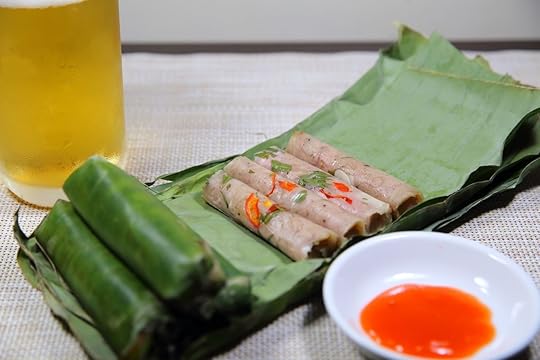
Photo: /Shutterstock
This cured and fermented pork or beef roll comes from Vietnam. The traditional ingredients are minced pork and shredded pork skin, but some modern versions are made with shredded beef. Garlic, peppercorns, and Thai chili give nem chau its characteristic flavor: salty and sour with an added twist of fiery spiciness. The mixture of meat and seasoning is then wrapped in banana leaves, where it’s left to ferment for several days before it’s eaten straight from the leaf or grilled. Nem chua is a popular snack all year around, but it’s often served as an appetizer on Tet, or Vietnamese Lunar New Year.
9. Poi
A staple starch for the indigenous people of Hawaii, this sour purple mash is made from taro root. First, the taro root is steamed or baked in an underground oven called an imu. Then the softened plant is cleaned and mashed on a wooden board called a papa ku‘i ‘ai using a pestle called the pōhaku ku‘i ‘ai. The mashed taro is called pa‘i ‘ai. Water is added until it takes on a thick, creamy, pudding-like texture, which is when it becomes poi. Fresh poi has a sweet, delicate flavor, but once it’s left to ferment over several days it becomes sour.
Typically, poi is served the same way as rice: as a side dish accompanying meat and vegetables. Poi is a staple alongside kalua pig, and lomi lomi, or salted, salmon.
10. Doogh

Photo: Fanfo/Shutterstock
Technically a beverage, this fizzy Iranian drink is made from yogurt combined with carbonated water. Doogh is both salty and mouth-puckeringly sour, and it’s considered a refreshing summertime drink. Served on hot days and after meals, doogh is a satisfying way to cool off that’s akin to an Indian lassi.
Ash-e doogh is the soup version, served either hot or cold in Iran, as well as Azerbaijan and Turkey, where it’s garnished with coriander, leek, tarragon, mint, and parsley. Chickpeas or lamb meatballs give this sour yogurt soup substance. 
More like thisFood + Drink12 pickled, cured, and fermented foods from around the world
The post 10 of the most pungent, salty, and tangy fermented foods from around the world appeared first on Matador Network.

Destinations accepting US tourists
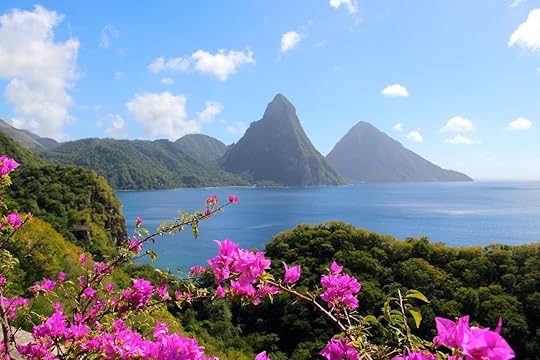
Figuring out this summer’s travel restrictions feels like navigating a labyrinth with no ball of thread. At best, it’s maddening. At worst, it’s simply impossible. The public health situation of every country is fluid, meaning concrete reopening dates are as elusive as airline tickets with no cancellation fees. This is incredibly frustrating for those eager for a much-needed summer vacation. Luckily, some destinations have already reopened their borders to international tourism, or set hard dates for doing so. These are the destinations committed to welcoming back US travelers this summer.
Caribbean
US Virgin Islands
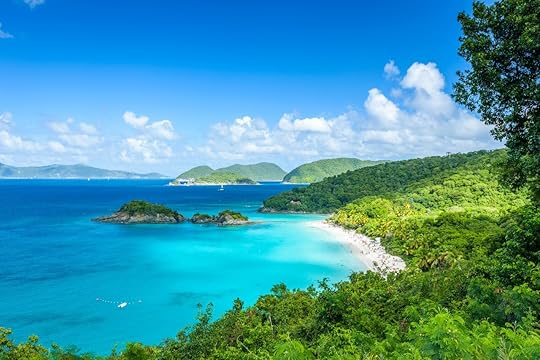
Photo: Sean Pavone/Shutterstock
The US Virgin Islands — including St. Croix, St. John, and St. Thomas — reopened to tourism on June 1. With a relatively low total of reported COVID-19 cases and few deaths, the islands never closed their airports, allowing business travelers, emergency personnel, and USVI residents to continue traveling. As of June 1, airports have been opened to all visitors with no quarantine, as long as they pass a temperature check and health screening upon arrival. Once on the island, visitors must wear face masks inside businesses, social gatherings are restricted to 10 people max, and restaurants will be at 50 percent capacity.
Antigua
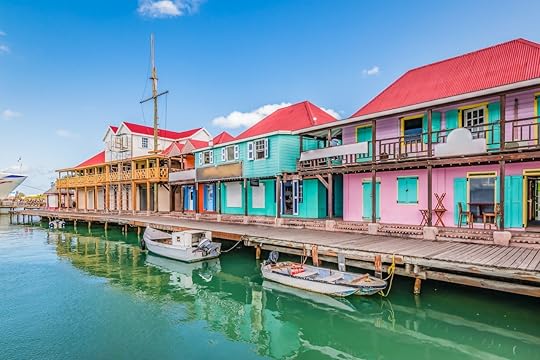
Photo: NAPA/Shutterstock
Antigua has been open to US travelers since June 4. If you’re planning to vacation in Antigua, however, you need to provide proof of a negative COVID-19 test upon arrival, as well as fill out a health declaration form and traveler accommodation form. Health screenings, temperature checks, and antibody tests will be administered at the airport free of charge. Masks are also required in public spaces.
St. Lucia
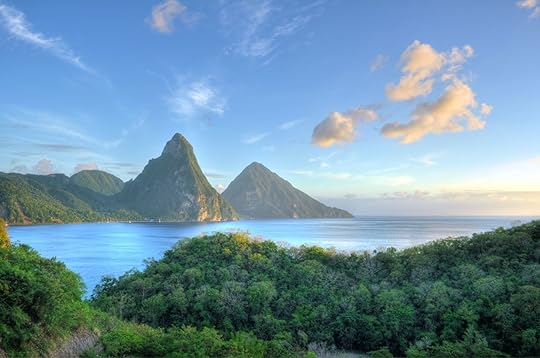
Photo: PlusONE/Shutterstock
St Lucia, which has recorded only 19 COVID-19 cases and zero deaths, opened with confidence on June 4. Incoming visitors must present proof of a negative COVID-19 test taken within 48 hours of boarding their flights, undergo temperature checks upon arrival, and wear face masks in public spaces during their stay. American Airlines hasn’t resumed flights to St. Lucia yet, but plans to do so in July. Phase two of St. Lucia’s reopening plan is slated for August 1, the details of which will be revealed in the coming weeks.
Jamaica
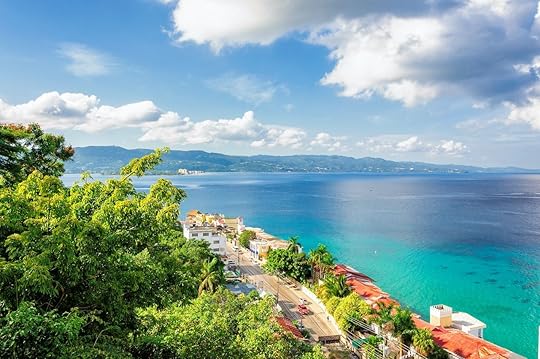
Photo: Lucky-photographer/Shutterstock
On June 15, Jamaica began welcoming international tourists once again and American, Delta, and United airlines have all resumed operations from the US. A negative COVID-19 test is not a requirement for entry into Jamaica, though arriving passengers will be given temperature checks. If you do have a temperature, a test will be administered and you will be asked to self-quarantine at your hotel until the test results are available. Face masks are required at hotels, beaches, and on public transportation. Many resorts have already opened, though some will not resume operations until the end of July.
St. Barts
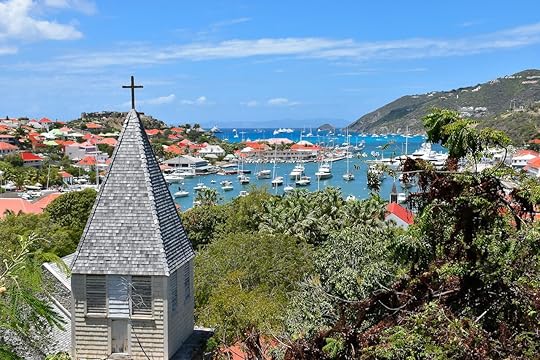
Photo: NAPA/Shutterstock
St. Barts reopened its airport to all international travelers on June 22, provided they have proof of a negative COVID-19 test taken within 72 hours of arrival. If you can’t get tested before arrival, you’re required to be tested at the airport, and then quarantine at your hotel for 24 hours until the results are available. If you plan on remaining in St. Barts for longer than seven nights, you will have to undergo a second test on the seventh day of your trip. In the event that you do test positive, you will be asked to quarantine for 14 nights. On June 22, Tradewind Aviation will resume shuttle flights between San Juan Airport in Puerto Rico and St. Barts, and several airlines are running routes from the US to San Juan.
Bermuda
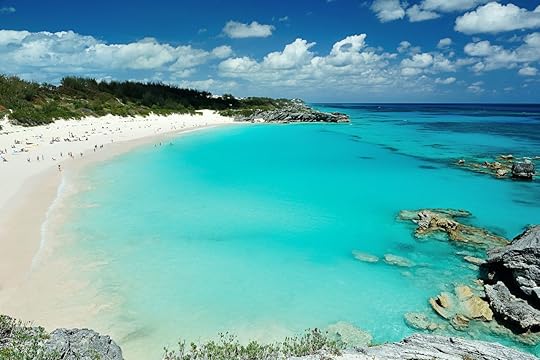
Photo: PixieMe/Shutterstock
Bermuda is opening up to international travelers on July 1, with a set of safety measures. Within 48 hours of departure, visitors must complete the Bermuda travel authorization process online. The process costs $75, and that includes the cost of all COVID-19 testing in Bermuda. Prior to your departure, you should take a COVID-19 test and be prepared to show proof of your negative result, and acquire health insurance that covers any coronavirus-related illness. Even if you do have a negative test result, you will be required to take another test at the airport, and wait between four and eight hours for the results. Once on the island, you will be required to take yet another test on days three, seven, and 14 at pop-up testing centers around the island, in addition to taking your own temperature twice a day and reporting the results via an online portal.
St. Martin
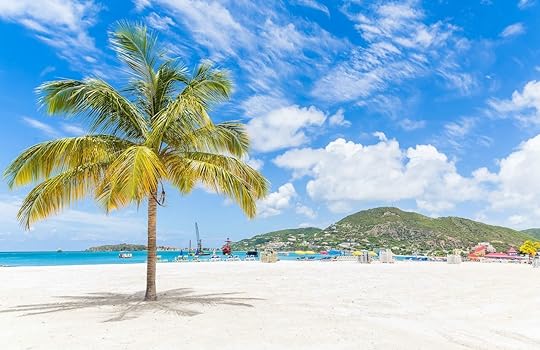
Photo: Darryl Brooks/Shutterstock
St. Martin is reopening to US travelers on July 1, with protocols similar to many other Caribbean destinations. All travelers will be required to show proof of a negative COVID-19 test (taken within 72 hours) upon arrival, as well as undergo mandatory temperature checks. Anyone with a fever or exhibiting symptoms could be subject to an additional test at their own expense. Spirit, JetBlue, and American airlines are all resuming flights to St. Martin in July, and resorts across the island will be reopening on a rolling basis throughout the summer.
Bahamas

Photo: Stefan Ugljevarevic/Shutterstock
The Bahamas has been slowly reopening businesses since May, and international travel is expected to resume on July 1. Phase one of the Bahamas’ new health protocol began on June 15, and allowed those with private jets, yachts, and boats to enter the islands. Commercial airlines also started resuming flights for Bahamian citizens, legal residents, and immediate family members of residents. Phase two begins on July 1, with commercial airlines available for leisure travelers. Southwest and American airlines have announced the resumption of their routes to the Bahamas in early July. Hotels and vacation rentals, including Airbnb and HomeAway, will also be allowed to open. Incoming visitors won’t have to show a negative test result, but can expect temperature checks at the airport.
Dominican Republic
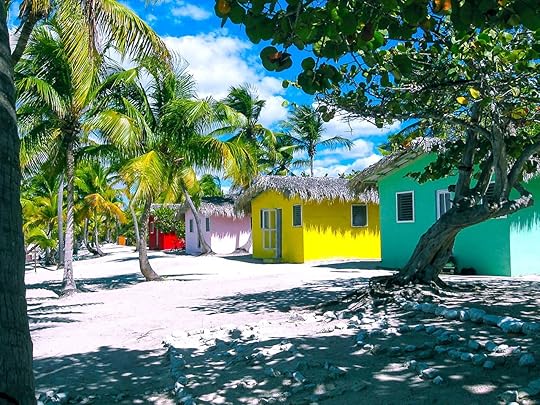
Photo: Solarisys/Shutterstock
The Dominican Republic will fully reopen to tourists on July 1, as part of phase four of the country’s reopening plan. Hotels, airports, gyms, and restaurants will all open at the start of July, in an effort to keep pace with its Caribbean neighbors. JetBlue and Air Transit will resume service from July 1, with other airlines like Air Canada and Frontier to follow. Half the country’s hotels are expected to open in July, while the remaining properties will open by November. Details about airport procedures remain a bit vague, but incoming passengers should expect temperature checks and other heightened precautions, potentially including a COVID-19 test.
Aruba
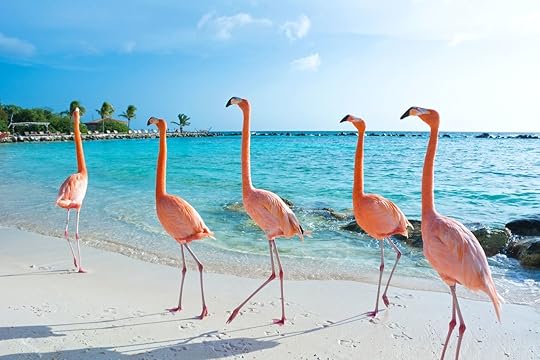
Photo: Natalia Barsukova/Shutterstock
Although Aruba has already reopened to visitors from nearby Bonaire and Curaçao, US travelers won’t be allowed in until July 10. Airlines have started announcing their flight schedules from various US cities to Aruba, and the list can be viewed online. All hotels, national parks, and tourism attractions in Aruba are required to abide by new safety protocols, and those that do have a certification seal.
Visitors will be expected to complete an embarkation/disembarkation card prior to arrival, show a negative COVID-19 test taken within 72 hours of arrival (or opt to pay for a test at the airport and quarantine for 24 hours), and have health insurance that covers COVID-19. The detailed list of requirements is available on Aruba’s official website.
Barbados

Photo: Simon Dannhauer/Shutterstock
Having registered over 35 consecutive days without a new COVID-19 case, Barbados will reopen to international tourists on July 12. Flights to the island will resume mid-July from Air Canada, British Airways, Caribbean Airlines, and JetBlue. Visitors from high-risk countries (countries with more than 10,000 new cases in the past seven days and community transmission) will need to take a test 72 hours prior to their departure, while those from low-risk countries (countries with less than 100 new cases in the past seven days and not in the Community Transmission Category) can take a test up to one week prior to their departure. Anyone without a negative test will be required to take one upon arrival and quarantine for 48 hours at their own expense while test results are processed.
Puerto Rico
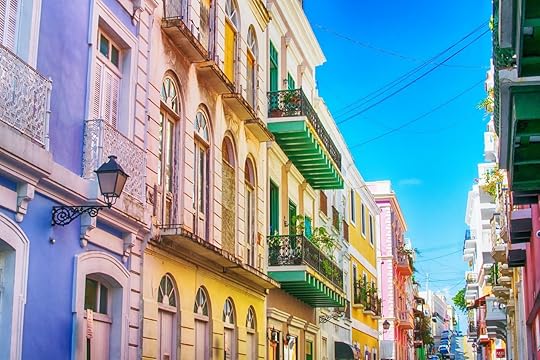
Photo: fldlcc/Shutterstock
Puerto Rico is set to welcome back international tourists starting July 15. Upon arrival, visitors will be required to show proof of a negative COVID-19 test. If you didn’t get tested prior to your flight, testing will be made available at the airport. A 14-day quarantine period is currently in effect for all travelers, regardless of test results, but the government is working on an exception for travelers who test negative. Before restarting operations, all tourism businesses are required to comply with a strict set of hygiene regulations, with restaurants at 50 percent capacity and temperature checks required at the door. Until July 22, there will also be a curfew in place for everyone except essential workers, mandating that people stay indoors between 10:00 PM and 5:00 AM.
Turks and Caicos

Photo: TravnikovStudio/Shutterstock
Starting on July 22, Turks and Caicos plans to reopen its borders to international tourism. On that date, American, United, and JetBlue will resume flights from Miami, Charlotte, and New York, with more flights to follow in the next few weeks. Passengers must be pre-certified by TCI Assured, a quality assurance portal that will be available through Turks and Caicos’ official tourism website, and present their certification upon arrival. To obtain the certification — and the sticker that comes with it — you must provide proof of a negative COVID-19 test taken within 72 hours of arrival. No quarantine period will be required for those with negative test results.
Belize
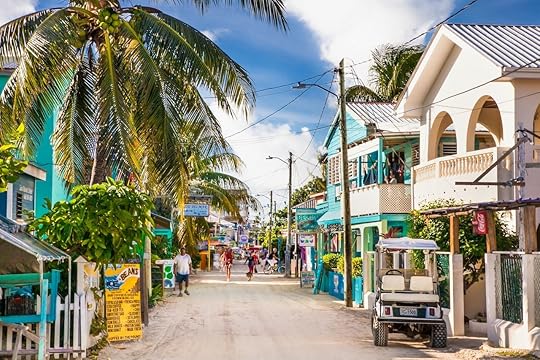
Photo: Aleksandar Todorovic/Shutterstock
Despite rising cases in the United States, and growing concern over the virus’ spread, Belize has officially announced an August 15 reopening date for US tourists, with United, American, Delta, and Avianca all resuming service. Visitors will, however, be greeted by an array of new safety precautions. Travelers can only book a pre-approved accommodation, must show the results of a negative COVID-19 test upon arrival, and download the Belize health app that tracks user movement throughout the country.
Asia
Maldives

Photo: Lifestyle Travel Photo/Shutterstock
Starting on July 15, the Maldives will welcome international travelers to the resorts, marinas, and hotels on its uninhabited islands. You’ll have to fill out a health card and make frequent use of a mask, but you won’t have to show a negative COVID-19 test or quarantine for any length of time. If you’re experiencing any COVID-19 symptoms, however, you will be expected to take a test at your own expense. It’s also important to keep in mind that accommodation must be booked in advance at a government-registered property, and you won’t be allowed to hop between different hotels during your stay. To visit inhabited islands, you’ll have to wait until August 1, when hotels and resorts reopen.
Sri Lanka

Photo: givaga/Shutterstock
Sri Lanka will reopen to tourists on August 1, but don’t expect to slip through without a COVID-19 test. Sri Lanka requires four COVID-19 tests throughout the duration of your stay. The first should be taken within 72 hours of your departure to Sri Lanka, and the second administered at the airport, free of charge, though you will have to quarantine for 24 hours while waiting for the results. The third test must be taken four to five days after your arrival via a mobile unit, and if you’re staying for 10 or more days, you’ll have to take yet another test on the 10th day. If you test positive at any point, you will be required to quarantine for 14 to 21 days. Also keep in mind that a tourist visa will cost $100 (it was previously free), and you must provide your itinerary, proof of medical insurance, booking details, and return ticket information in your visa application.
Cambodia

Photo: karinkamon/Shutterstock
Cambodia is open to international travel, but restrictions and guidelines abound. All incoming travelers must have medical insurance policies covering a minimum of $50,000, take a COVID-19 test at the airport, and quarantine for a night while you wait for the results. If anyone on your flight tests positive, however, you will be forced to quarantine for two weeks. What really sets Cambodia apart is the $3,000 “coronavirus deposit” required upon arrival, to cover any potential medical expenses. The deposit will be refunded to you — minus the cost of airport testing — if you test negative.
Dubai

Photo: Rasto SK/Shutterstock
On July 7, the United Arab Emirates’ most popular destination will finally reopen to international visitors. To enter Dubai, however, you must have health insurance that covers COVID-19, and show proof that you recently tested negative for the virus. You can also take a test at Dubai’s airport. If you test positive, you will be expected to undergo a 14-day quarantine at your own expense.
Uzbekistan

Photo: monticello/Shutterstock
Uzbekistan is among the world’s most confident countries when it comes to reopening to international travelers. Already open for tourism, Uzbekistan is truly backing up its safety claims by offering visitors a financial incentive to visit. If tourists become infected with COVID-19 while visiting Uzbekistan, the government will pay up to $3,000 in compensation for any medical expenses. The country’s hotels are implementing strict new hygiene measures, and must meet certain standards of health and safety. To be eligible for the $3,000, however, you must visit through a group tour organized by a local operator. 
More like thisCultureTo see the real Jamaica, skip the resort and go to Kingston
The post These destinations are opening to US tourists this summer appeared first on Matador Network.

Abasolo corn whisky from Mexico
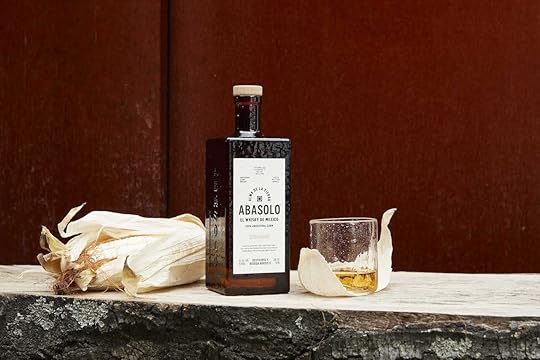
Whiskey runs on corn. It’s the defining ingredient in bourbon in the United States and often rounds out rye whiskeys in the US and Canada. The most popular Irish whiskeys, including Jameson, use corn, as do many Scotch whisky blends. Yet in the birthplace of corn, Mexico, corn whiskeys have typically been somewhat of an afterthought. A distillery in Jilotepec de Abasolo, Mexico, is working to change that with ancestral corn and traditional techniques.
Abasolo Whisky is made with 100-percent cacahuazintle corn. The corn is nixtamalized, a 4,000-year-old process also used to prepare corn for tortillas and tamales, and roasted before fermentation. All of this is done with one goal: to showcase “how extraordinary these flavors from Mexico are,” says Ivan Saldana, the co-founder and master distiller of the Mexican spirits company Casa Lumbre.
Prior to Abasolo, Saldana and Casa Lumbre released Montelobos mezcal and Ancho Reyes, a chile liqueur. The company mission is to honor the ingredients of Mexico, and corn was an obvious next choice after working with agave and chiles. After experimenting with different heritage varieties and spirit styles, the company decided to make a whiskey unlike any other in the world.
And it all centers around the corn.

Photo: Abasolo Whisky
Mexico has, by some estimates, nearly 60 varieties of corn. Many rely on regional high altitude conditions, and some are only kept alive by small local farmers. After experimenting with numerous types, Saldana landed on cacahuazintle. It’s the same corn used for pozole, the beloved hominy soup eaten across Mexico.
The cacahuazintle used for Abasolo is grown around 30 miles from the distillery near the base of a volcano some 7,000 feet above sea level. The corn is grown for flavor — which is in stark contrast to the commercial yellow corn that dominates the US market that’s designed to be a disease-resistant, high-yield crop.
“For ancestral corn, one of the most, if not the most, important factors for the human selection of the corn has been flavor,” Saldana says. “This corn has beauty. No GMO, no height restrictions. Just generations of families choosing the corn because it’s the one they like most and it grows well.”
There are others working with heritage Mexican corns, like Sierra Norte, which uses Oaxacan varieties. Sierra Norte also blends in malted barley.
Saldana wanted to do something different by using solely corn — something that’s not typically done even with bourbon, the whiskey most associated with corn. To create a well-rounded spirit, Saldana found inspiration from historic practices that people in Central and South America have long relied on. The result of mixing the three corn treatment styles is a complex whiskey that embodies the taste of Mexico.
Nixtamalization, roasting, and a different type of malt
Nixtamalization is the process of cooking corn kernels in an alkaline environment. After the cooking process is complete, the corn is ground into masa to make foods like tortillas and tamales. Nixtamalization improves the nutritional benefits people can obtain from corn, and it’s believed to have been crucial to the early development of Mesoamerican cultures.
The nutritional value is everything for food products but means nothing when it’s distilled. The impact nixtamalization has on flavor, however, matters greatly for Saldana and his team.
“We thought, if we’re going to do a whiskey, we must bring something truly unique,” Saldana says. “Well, we nixtamalize corn in Mexico, and the idea came to start exploring, and we were impressed.” Crucially, he adds, “it brings a lot of the flavors that those, like me, who have corn in my history and life as a Mexican, [know].”
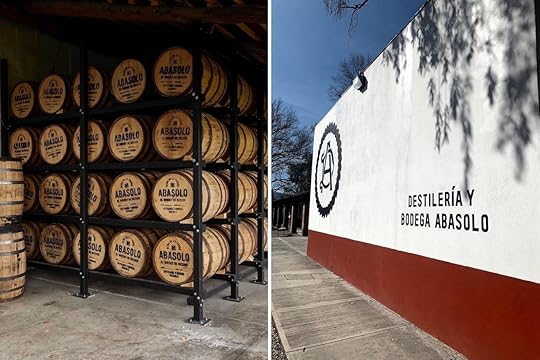
Photo: Abasolo Whisky
Saldana also looked to the northern Mexico states of Chihuahua and Sinaloa, where he says corn was historically roasted before being milled. To add the flavor of toasted grains, Abasolo roasts the nixtamalized corn in an adapted coffee roaster in the distillery.
For the final technique, Saldana had to look farther south to Peru. Whiskeys around the world typically rely on malted barley or malted wheat to aid in fermentation, regardless of what the main ingredient of the whiskey is. The grain is germinated until it sprouts and then heated to stop growth. This process releases enzymes and breaks down some of the starches to get the grains fermenting.
A Peruvian corn beer called jora does this malting process with corn. Saldana saw this and, to keep Abasolo 100-percent cacahuazintle, incorporated it into his practices.
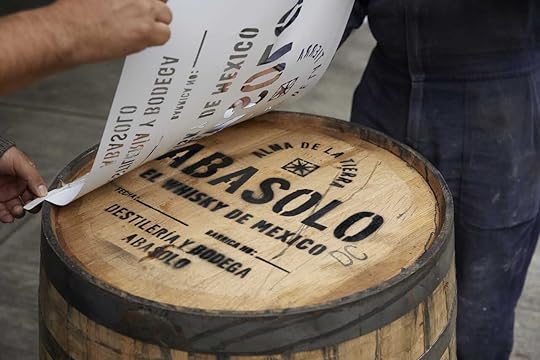
Photo: Abasolo Whisky
Whiskey producers have depended on corn for centuries. While Mexico gets more (and deserved) attention for its agave spirits, corn is crucial to the food culture of the country. Abasol pays its respects by making heritage corn the front, center, and spine of the spirit. It’s aged in used bourbon barrels for two years, mellowing the whiskey without hiding it behind the flavors from the wood.
The result is a whiskey that’s extremely light in color. It’s easy to sip neat and has a slightly toasted creamed corn flavor that’s not too sweet, while tea-like herbal notes and slight vanilla balance it out. It is, in short, a showcase of the extraordinary flavors from Mexico. 
More like thisSpirits + CocktailsThe major differences between the world’s 10 best whiskey-making countries
The post This whisky captures the flavors of Mexico through ancestral corn appeared first on Matador Network.

Koalas may be extinct by 2050 in NSW

According to the year-long parliamentary inquiry conducted by the Australian state of New South Wales, koalas are in danger of going extinct before 2050 in the region. The report revealed that the species is seriously threatened by habitat loss, largely due to logging and clearing of forests. The bushfires earlier this year certainly didn’t help either, with about 24 percent of koala habitat on public land impacted.
“Given the scale of loss as a result of the fires to many significant local populations,” the report says, “the committee believes the koala will become extinct in New South Wales well before 2050 and that urgent government intervention is required to protect their habitat and address all other threats to their ongoing survival.”
The committee made 42 recommendations to the government, including the prioritization of protecting koala habitat corridors, improving monitoring methods, increasing funding for conservation groups, banning logging in old-growth forests, and incentivizing farmers who protect the land rather than clear it.
Chris Gambian, the chief executive of the Nature Conservation Council of NSW, said, “We are pleased that there is a growing political consensus that koala extinction is a very real possibility if we don’t act urgently to protect koala habitat […] The plight of the species is the clearest argument that we must overhaul our environmental laws to reverse the trend.” 
More like thisNewsMouse species suspected extinct after wildfires is found alive in Australia
The post Koalas will go extinct by 2050 in New South Wales, Australia, inquiry finds appeared first on Matador Network.

Italian village offers free stays

Countries are pulling out all the stops this summer to (responsibly) encourage tourism. The Italian village of San Giovanni in Galdo in southern Italy is making prospective visitors an offer that’s pretty tough to refuse. For travelers who visit between July and October, the village is offering free accommodation in one of its many vacant homes.
Population decline has led to the abandonment of several houses, which are now being repurposed for tourist accommodation. The initiative is called Regalati il Molise (which means “give yourself to Molise”), and visitors are invited to spend up to seven nights, for free, in one of the region’s vacant houses. The idea behind it is that, since lodging costs are covered, visitors will have more money to invest in the local economy.
Enzo Luongo, a local activist who created the initiative, told The Telegraph, “Due to decades of emigration from Molise, there are houses in village centers that have been lying empty for years. These are beautiful but depopulated villages that don’t have any tourist accommodation to begin with, so we thought: how can we help revive our historic villages, while also encouraging visitors during these difficult times when tourism is at an all-time low?”
To take advantage of the offer, you just have to fill out a form explaining why you’re eager to discover Molise, and email it to the town’s cultural association at amicidelmorrutto@gmail.com. 
More like thisNewsThis ‘COVID-free’ Italian town is selling houses for just $1
The post This Italian village is offering visitors free accommodation this summer appeared first on Matador Network.

Matador Network's Blog
- Matador Network's profile
- 6 followers



